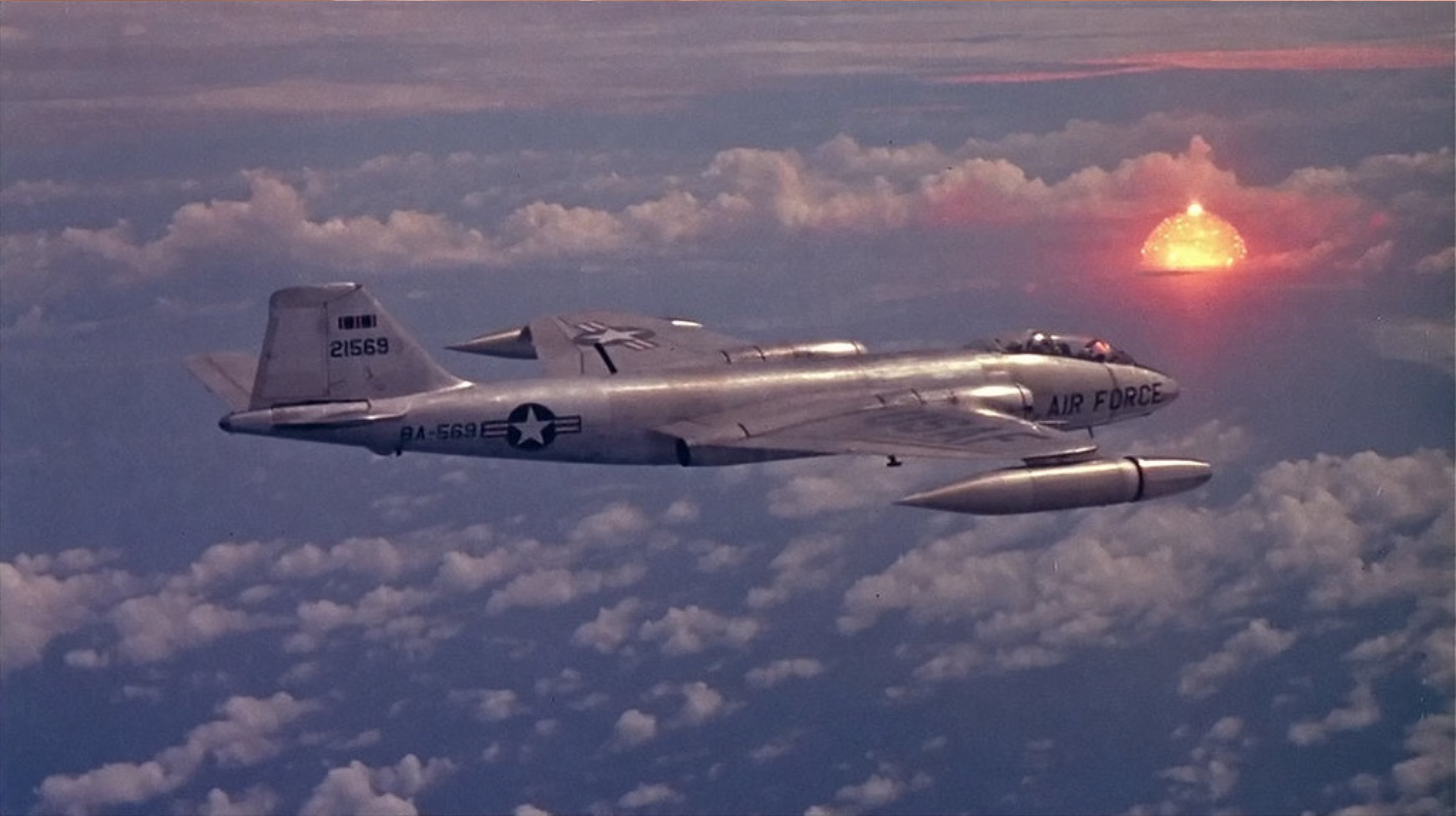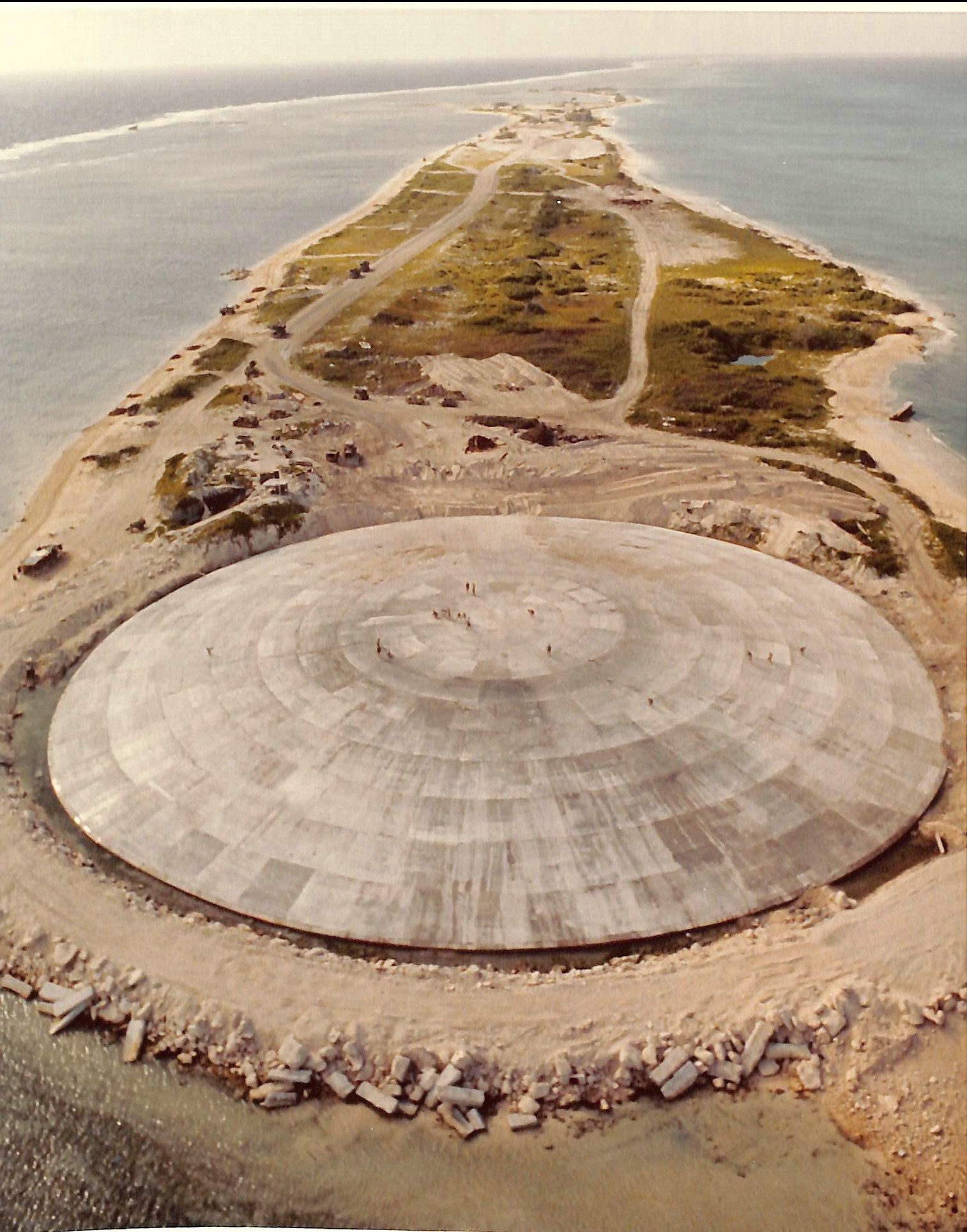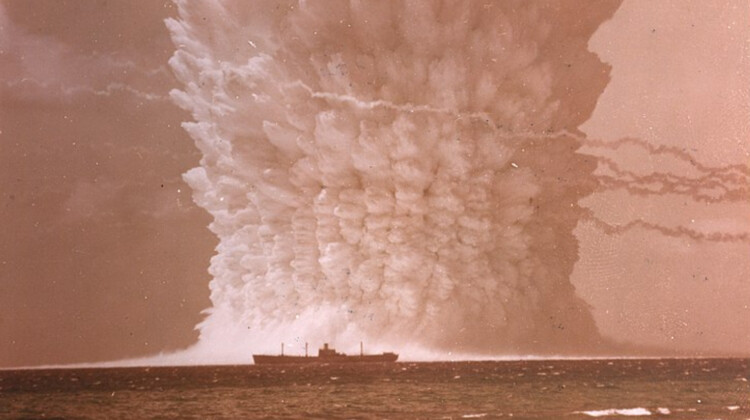Operation Hardtack I, a series of nuclear tests conducted by the United States in the Pacific Ocean in 1958, was a pivotal moment in the history of atomic testing. One of the most dramatic and memorable events of this operation was the underwater atomic blast known as “WAHOO.” This article explores the fascinating details of Operation Hardtack I, highlighting the significance of the WAHOO blast and its lasting impact on nuclear weapons testing.
Setting the Stage
The late 1950s were a period of intense global tension during the Cold War. The United States and the Soviet Union were locked in a nuclear arms race, with both nations vying for supremacy in nuclear weapons technology. Operation Hardtack I was part of the US effort to test and develop various atomic weapons, including their delivery systems and tactical applications.
Operation Hardtack I
Operation Hardtack I consisted of a series of 35 nuclear tests conducted between April and October 1958 at the Pacific Proving Grounds, an area in the central Pacific Ocean used for nuclear testing. These tests ranged from high-altitude airbursts to deep underground explosions. Each test aimed to gather essential data about the performance and effects of atomic weapons under different conditions.
The inaugural test, codenamed YUCCA, marked the beginning of the operation’s ambitious agenda. YUCCA involved a nuclear device affixed to a helium balloon launched from the USS Boxer (CV 21), stationed near the Enewetak Atoll. This project was structured into three distinct phases, with the initial phase dedicated to the refinement and advancement of nuclear weaponry. It represented a natural progression from the earlier nuclear testing endeavors carried out at Enewetak and Bikini in the early to mid-1950s. The weapons development laboratories, such as the Los Alamos Scientific Laboratory, played a pivotal role in detonating experimental devices, while the Department of Defense (DoD) provided essential support and conducted non-interfering experiments.

The second phase focused on underwater tests, WAHOO and UMBRELLA, in a bid to enhance our comprehension of underwater explosion effects on Navy ships and materials, building on prior underwater tests like BAKER (1946) and WIGWAM (1955). Lastly, the third segment centered on air-borne nuclear weapon defense, with high-altitude tests like rocket-borne TEAK and ORANGE and balloon-hoisted YUCCA.
These experiments not only contributed to weapon development but also yielded crucial insights into the explosive and radiation effects, setting the stage for advances in nuclear technology and national defense. Additionally, given the urgency of developing a nuclear-armed fleet ballistic missile, a dedicated segment of Hardtack I was allocated to testing the warhead for the Polaris missile, marking a significant chapter in the Cold War’s nuclear arms race.
The WAHOO Blast
Among the various tests conducted during Operation Hardtack I, the WAHOO blast stood out as a significant milestone in engineering and nuclear testing. On May 16, 1958, the US military detonated an Mk-7 9.3-megaton atomic bomb in the open ocean near Enewetak Atoll in the Marshall Islands, with a depth of 500 feet in 3,200 feet of water.

Underwater Atomic Blast: Key Objectives
The WAHOO test had several key objectives:
- Assessing underwater blast effects: One of the primary goals was to understand the destructive potential of nuclear explosions in underwater environments. This knowledge was critical for planning naval warfare strategies and assessing the vulnerability of submarines and surface vessels to atomic attacks.
- Weapon development: The test aimed to validate and refine the design of nuclear weapons for naval warfare, such as torpedoes and depth charges. It also provided valuable data on the bomb’s performance.
- Radiological safety: Researchers sought to understand the dispersion of radioactive materials in the ocean after an underwater nuclear explosion, which had implications for protecting naval personnel and the environment.
Technical Challenges
The WAHOO blast presented numerous technical challenges. Detonating a nuclear bomb underwater required precise timing and placement to maximize the desired effects. The bomb had to be suspended at a specific depth to optimize shockwave propagation and minimize the creation of a massive crater on the ocean floor.
Results and Impact
The WAHOO blast yielded a wealth of valuable data. It demonstrated the devastating power of underwater nuclear explosions, with the resulting column of water vapor rising more than half a mile high. The test also showed that underwater detonations could create significant surface waves and radioactive fallout, posing severe risks to naval vessels and personnel.
Below is a video clip during the WAHOO blast, unearthed and uploaded by the Atomic Tests channel.
The data gathered from the WAHOO test contributed to the development of more sophisticated naval nuclear weapons and improved safety measures for handling nuclear materials. This knowledge proved crucial during the subsequent decades of the Cold War as the United States and the Soviet Union continued to refine their atomic-capable arsenals.
Environmental Consequences
Operation Hardtack I, including the WAHOO test, had significant environmental consequences. The explosions released radioactive materials into the ocean, contaminating marine ecosystems and impacting the health of those living in the nearby atolls. The long-term ecological effects of these tests raised concerns and led to greater scrutiny of nuclear testing in later years.

~
Operation Hardtack I, with its iconic Wahoo blast, played a pivotal role in advancing the United States’ nuclear capabilities and understanding of underwater atomic explosions. While it provided essential data for the development of naval nuclear weapons, it also underscored the environmental and humanitarian costs associated with such tests. Today, the legacy of Operation Hardtack I serves as a reminder of the complex and far-reaching consequences of nuclear weapons testing during the Cold War era, emphasizing the importance of international efforts to prevent their use and proliferation.









